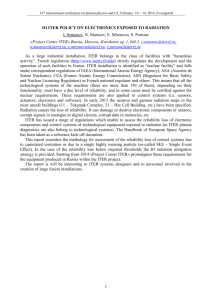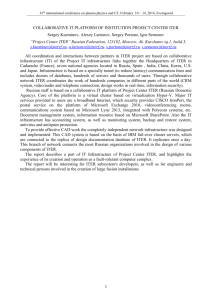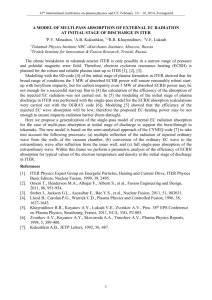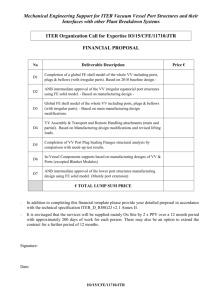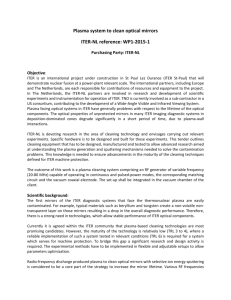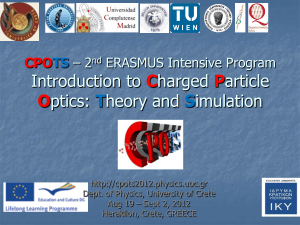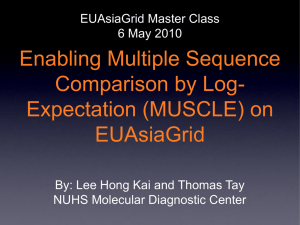Advanced Thomson scattering techniques for ITER and RFX
advertisement
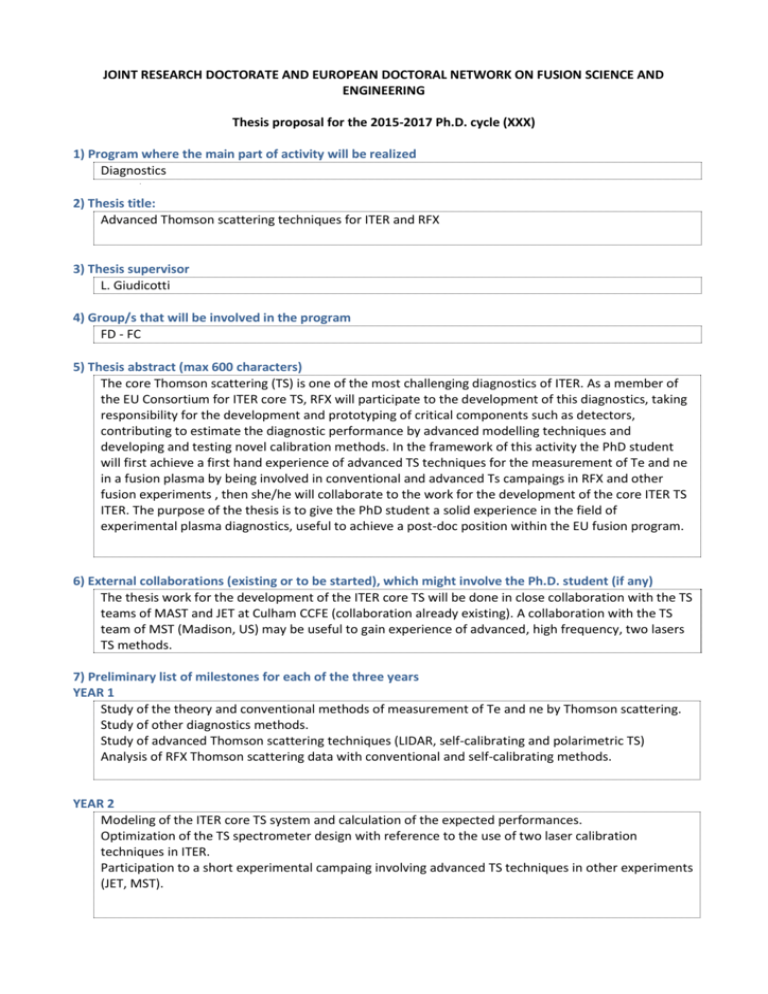
JOINT RESEARCH DOCTORATE AND EUROPEAN DOCTORAL NETWORK ON FUSION SCIENCE AND ENGINEERING Thesis proposal for the 2015-2017 Ph.D. cycle (XXX) 1) Program where the main part of activity will be realized Diagnostics 2) Thesis title: Advanced Thomson scattering techniques for ITER and RFX 3) Thesis supervisor L. Giudicotti 4) Group/s that will be involved in the program FD - FC 5) Thesis abstract (max 600 characters) The core Thomson scattering (TS) is one of the most challenging diagnostics of ITER. As a member of the EU Consortium for ITER core TS, RFX will participate to the development of this diagnostics, taking responsibility for the development and prototyping of critical components such as detectors, contributing to estimate the diagnostic performance by advanced modelling techniques and developing and testing novel calibration methods. In the framework of this activity the PhD student will first achieve a first hand experience of advanced TS techniques for the measurement of Te and ne in a fusion plasma by being involved in conventional and advanced Ts campaings in RFX and other fusion experiments , then she/he will collaborate to the work for the development of the core ITER TS ITER. The purpose of the thesis is to give the PhD student a solid experience in the field of experimental plasma diagnostics, useful to achieve a post-doc position within the EU fusion program. 6) External collaborations (existing or to be started), which might involve the Ph.D. student (if any) The thesis work for the development of the ITER core TS will be done in close collaboration with the TS teams of MAST and JET at Culham CCFE (collaboration already existing). A collaboration with the TS team of MST (Madison, US) may be useful to gain experience of advanced, high frequency, two lasers TS methods. 7) Preliminary list of milestones for each of the three years YEAR 1 Study of the theory and conventional methods of measurement of Te and ne by Thomson scattering. Study of other diagnostics methods. Study of advanced Thomson scattering techniques (LIDAR, self-calibrating and polarimetric TS) Analysis of RFX Thomson scattering data with conventional and self-calibrating methods. YEAR 2 Modeling of the ITER core TS system and calculation of the expected performances. Optimization of the TS spectrometer design with reference to the use of two laser calibration techniques in ITER. Participation to a short experimental campaing involving advanced TS techniques in other experiments (JET, MST). YEAR 3 Selection, specification and procurement of prototype detectors for ITER TS. Laboratory characterization and comparison of the prototypes. Specifications of the final ITER TS detectors. 8) Description of the research project (max 8000 characters) The Thomson scattering system for the measurement of Te and ne in the plasma core is one of the most challenging diagnostics under development for ITER. In recent years a preliminary design of this diagnostics based on the LIDAR TS concept, already implemented in JET, has been prepared by a group of EU laboratories, including RFX. This study has shown that the achievement of the ITER TS measurement requirements by the LIDAR concept may be problematic and in any case requires a consistent effort in R&D both on laser and detector technology. Therefore recently a conventional (i.e. non LIDAR) solution has emerged as a more affordable and reliable approach. The objective of the research project is to contribute with the TS teams of other laboratories, to the design and development of the ITER core TS system, by modelling the LIDAR and conventional system solutions to calculate and compare the expected performances of both. This will eventually lead to the choice of one or the other approach and give useful informations for the optimization of critical components of the chosen system, such as the detectors. Another objective of the research project is the analysis of dual-laser TS data in RFX. The dual-laser techniquec addresses the important problem of the spectral calibration of ITER TS collection optics and spectrometers: by recording the TS signal obtained from the same plasma volume with two lasers of different wavelengths it is possible to determine simultaneously Te, ne, and the relative calibration factors. This self calibration method exploits the plasma itself as the calibrating source and therefore is very convenient in machines with limited access to the vacuum vessel such as ITER. So far this method has never been demonstrated, and a recent study has shown that the multipoint TS system of RFX has some favourable characteristics that make it very suitable for a test of the technique by using the two ND:YLF and ND:YAG laser systems here available. A dual-laser experimental TS campaign in RFX is scheduled for the last months of 2014 to collect a large base of data suitable for a careful assessment of the method. The experience gained in these measurements will be used to include in the design of the ITER TS spectrometers the characteristics that will make them compatible with this calibration method. In the last part of the research project, we will perform an experimental characterization of the complete set of detectors necessary for the ITER TS, including new prototype detectors developed to our specifications. This will give informations on the performances and reliability of all the available detectors, leading to the choice of the most suitable devices. The three year research project will include also the participation to a short experimental campaing in a major plasma experiment where there are in operation advanced TS techniques such as a LIDAR TS (JET) or a two laser, high frequency TS system suitable for Te and ne fluctuation measurements (MST). At the completion of this three-year project the PhD student will gain a solid experience in the field of experimental plasma diagnostics, useful to achieve a post-doc position within the EU fusion program.
